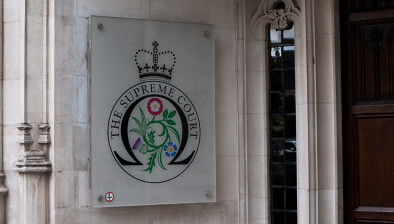Jamie Watt: Space – a new frontier in law

Jamie Watt
In October 2021 the Scottish government published its Space Strategy setting out Scotland’s ambition to become Europe’s leading space nation, writes Jamie Watt.
Committing to the delivery of a dedicated launch capability by summer 2023, and with five spaceports in development across the country, it targets a £4 billion share of the global space market, generating 20,000 jobs by 2030. This target reflects a current 12 per cent year-on-year growth of the sector, when compared to the UK’s 3 per cent.
In addition, with an average 40 per cent lower level of operating costs than elsewhere in the UK, Scotland manufactures more satellites than anywhere else in the world apart from California. This is not because it is a less regulated jurisdiction – in this small but vibrant part of the universe, “space law” still applies.
Space law is a body of laws that governs things you want to put up there, and how to get them up there, ranging from manufacturing, product liability, R&D and intellectual property to service provision and facility operation.
Whilst space may be the final frontier, operators often cross local borders as the industry is international. One must understand the legal language of international trade including Incoterms, the cornerstone of cross-border contracting, and trade controls, such as sanctions.
Space technology is often ground-breaking, providing competitive advantage to countries that have it, often leading to governmental control. International trade requirements also include compliance of anti-bribery, corruption and modern slavery laws in supply chains. Technology also often requires patents and cross-border licensing; therefore UK and foreign competition and antitrust laws beg consideration. Space operators should hold solid contracts and documented compliance on supply chain matters to ensure smooth progress into orbit.
Edinburgh is becoming Europe’s space data capital, with significant research funding already provided. Edinburgh’s existing ecosystem is generating an enviable pull internationally for providers and acquirers of data-based services. Legal requirements for data generation, storage and sharing must be addressed. One needs to consider what data is generated where, by whom, who owns it, who can use it and for what, and what regulation must be adhered to. It’s also worth considering what additional value can be leveraged from data; AI, for example, thrives on secondary data use.
A lot of AI-based projects are driven through research funding. Working from Scotland allows access to numerous funding streams, including those from the European and UK space agencies, complementing Scottish Enterprise and Research Council support. In December 2022, the UK Space Agency announced £2.7m funding for 13 space technology projects, four in Scotland, saying “funding new science and technology developments is crucial to growing the UK space sector and catalysing further investment”.
The Agency is now seeking industrial partners for satellite communications projects through a competitive call under the ESA ARTES programme. ESA funding has been crucial for the sector – two Scottish-based companies, Orbex and Skyrora, have secured £8.5m through ESA initiatives. We advised Orbex on the construction elements of its proposed Sutherland spaceport.
As the commercialisation of space has become more accessible to the private sector, the need to protect and own innovation also grows. Patents are the primary means to protect technology and operate along national boundaries, but do patents apply in space? The 1966 “Outer Space Treaty” provided that the state from whose territory or facility an object was launched retained jurisdiction and control over such object. Although this was a UN treaty, only US and German patent laws specifically reflect this. US patent legislation provides that objects launched into space are within their jurisdiction. Germany ensured that its patent legislation is applicable to inventions created on board an ESA-registered module before it signed the ESA Intergovernmental Agreement.
Aside from the question of where to launch, this instigates particular considerations when patenting space technologies, and a greater focus on how technology may be manufactured pre-launch instead of how it is used in space. When global network operator Sigfox applied for one of their patents, instead of it focusing on the satellite itself, it focussed on the technology and method of receiving and transmitting signals. All very complex – but that is space and while it presents significant opportunities, one may venture that it also requires a different approach to legal matters.
![]()
Jamie Watt is a partner at Harper Macleod LLP. This article first appeared in The Scotsman.








